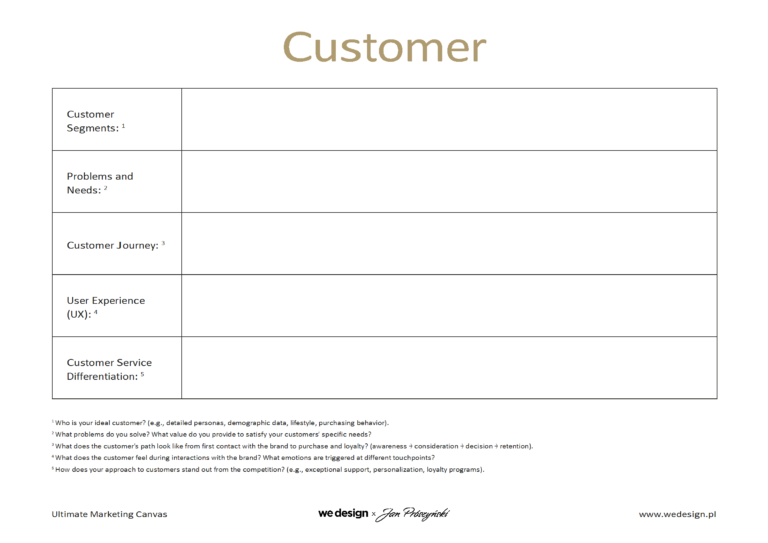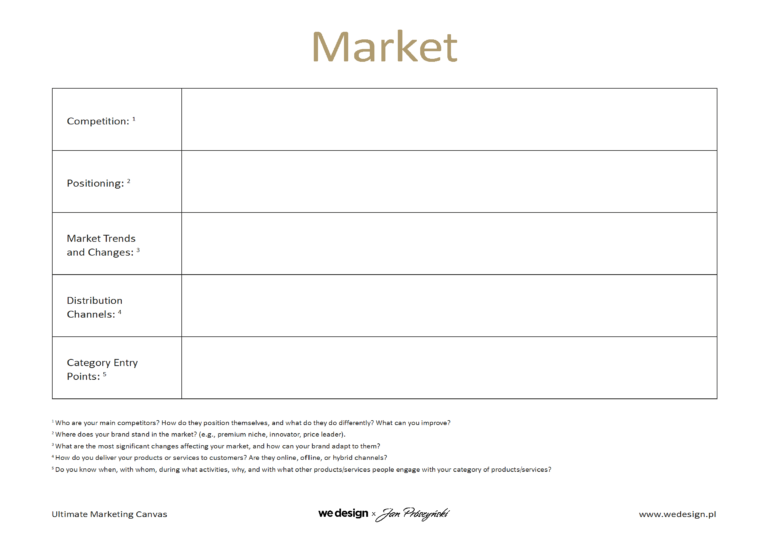Does your business and marketing sometimes feel like last-minute cooking—random ingredients, total chaos, and a final result that’s okay, but something’s still missing?
Ours did too. 😊 That’s why we created a way to bring order to the madness: The Ultimate Marketing Canvas.
This tool is like a recipe for the perfect tuna salad – every ingredient has its place and purpose. And it’s not just for marketers! Our Canvas also helps streamline operations, budget management, and cross-team collaboration.
Why Does Your Business Need an Integrated Marketing Canvas?
Marketing without strategy is like opening a can with a fork – you can do it, but why would you?
On top of that, businesses often operate in silos:
- Marketing talks about healthy lifestyles.
- Product development worries about ingredient costs.
- Operations stress over whether the warehouse can handle another promotion.
- Meanwhile, Finance chases everyone down with an Excel club.
The Canvas solves these problems because it:
✅ Unites teams – Yes, sales and marketing can get along!
✅ Brings order – Ensures actions align with the company’s strategy.
✅ Saves time & nerves – Clear priorities mean everyone knows what to do and can track the company’s focus at any moment.
Below, I’ll break down the five key pillars of this tool. In one of my previous articles (https://wedesign.pl/articles/7-marketing-canvas), I compared different marketing approaches, including their historical context. Now, it’s time to connect the dots.

Download editable tempates here: link
1. Customer-Centric Perspective
Who is your ideal customer? Are they hipsters looking for healthy snacks, busy professionals eating lunch at their desks, or students grabbing a quick bite between classes?
Theory:
People don’t buy products—they buy solutions. Your marketing should answer:
🔹 What problem do you solve? (Convenience, health, taste?)
🔹 What drives their decisions? (Price, quality, sustainability?)
🔹 How do they buy? (Social media, impulse, subscriptions?)
Practice:
✅ Segment your audience – Tailor messaging to different customer groups.
✅ Speak their language – Focus on benefits, not features.
✅ Make buying easy – Ensure convenience from packaging to purchase.
Put the customer first, and your marketing will naturally click.

2. Product & Service Perspective
A product’s success depends on how well it meets market needs and stands out from the competition. This perspective focuses on Value Proposition—the key message explaining why your product is unique.
Theory:
Your value proposition should answer three questions:
1️⃣ What problems does your product solve?
2️⃣ What benefits does it bring to users?
3️⃣ Why should a customer choose your product over a competitor’s?
Example:
If most competitors offer cheap, mass-produced tuna salads, your company might stand out by focusing on quality, sustainability, or unique flavors. But high quality alone isn’t enough—customers need to see and feel it, and that’s where your marketing strategy comes in.
Practical Steps:
🔹 Highlight unique features: Maybe your salad comes in eco-friendly packaging, is low-calorie, or includes superfoods like avocado and quinoa.
🔹 Communicate benefits: Customers buy value (or packaging 🙂, not products. Show them how your salad fits into their lifestyle: “A quick and healthy snack for busy people” or “A lunch that nourishes both your body and the planet.”
3. Market Perspective
Marketing doesn’t exist in a vacuum – it operates in a dynamic environment of competition and trends. This perspective helps businesses understand their position in the market and how they can grow.
Theory:
Market analysis involves:
🔹 Positioning – How do customers perceive your product against competitors? Are you a premium brand, or a budget-friendly option?
🔹 Trends – What do consumers care about right now? Health? Sustainability? Convenience?
One useful concept here is Category Entry Points (CEPs)—the moments when consumers think about buying a product. For tuna salad, this could be:
✅ A quick lunch at the office
✅ A healthy post-gym dinner
✅ A picnic snack
Practical Steps:
🔹 Segment your audience – Understand different customer groups and tailor communication for each. If corporate professionals and students both buy your product, adjust your messaging accordingly.
🔹 Adapt to trends – If keto diets are on the rise, consider launching a low-carb version of your tuna salad.

4. Communication Perspective
Communication is the bridge between your product and your customers. This perspective determines how and where you present your product to capture attention and build engagement.
Theory:
An effective communication strategy is consistent and engaging. Key elements include:
🔹 Channels – Where is your audience? On Instagram? LinkedIn? At the supermarket?
🔹 Tone & style – Are you fun and playful or professional and informative?
Practical Steps:
🔹 Choose the right channels – A premium brand might perform well on Instagram and TikTok with aesthetic visuals, while a budget-friendly option might benefit more from in-store promotions.
🔹 Stand out with storytelling – Instead of generic ads, tell a story: How does your tuna salad go from ocean to package?
5. Operational Perspective
Great marketing and an amazing product are only part of the equation. Without smooth operations, even the best strategy can fail—or never even launch.
Theory:
This perspective covers:
🔹 Resource management – Is your team (and your suppliers) ready for an increase in demand?
🔹 Budgeting – How are funds allocated between marketing and production?
🔹 Technology – Do you have tools for automation, like a CRM for tracking customer behavior?
Practical Steps:
🔹 Create realistic timelines – Set achievable deadlines for launching campaigns and new products.
🔹 Plan for scalability – If your campaign goes viral, can your supply chain handle the spike in orders?
How Does the Integrated Marketing Canvas Help Businesses?
The biggest advantage? It gets different teams speaking the same language. Marketing knows what Product is doing. Operations doesn’t have to guess when to ramp up production.
Instead of “Marketing sells promises the product can’t deliver,”
you get a team that works together like a well-rehearsed orchestra.
Conclusion
The Integrated Marketing Canvas is more than just a tool—it’s a way to bring order to your business. With it, marketing, sales, product, and operations can work together like perfectly balanced ingredients in a well-seasoned salad.
Bon appétit! 😊
Download editable tempates here: link